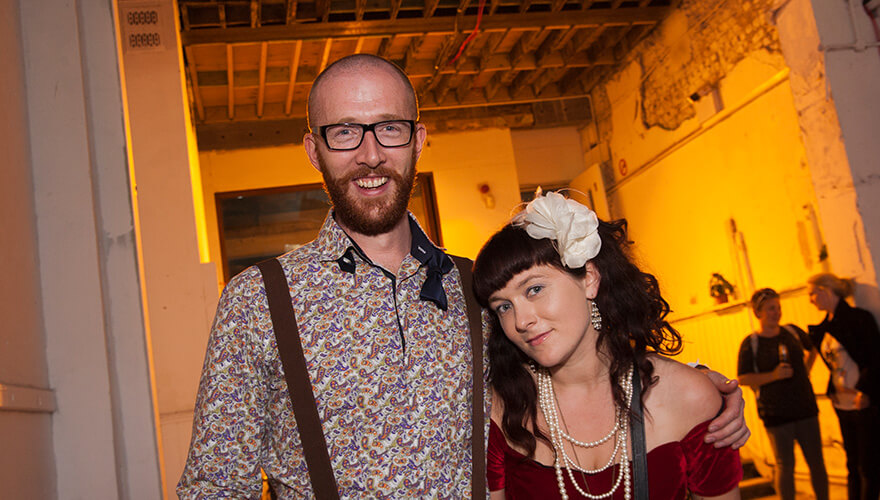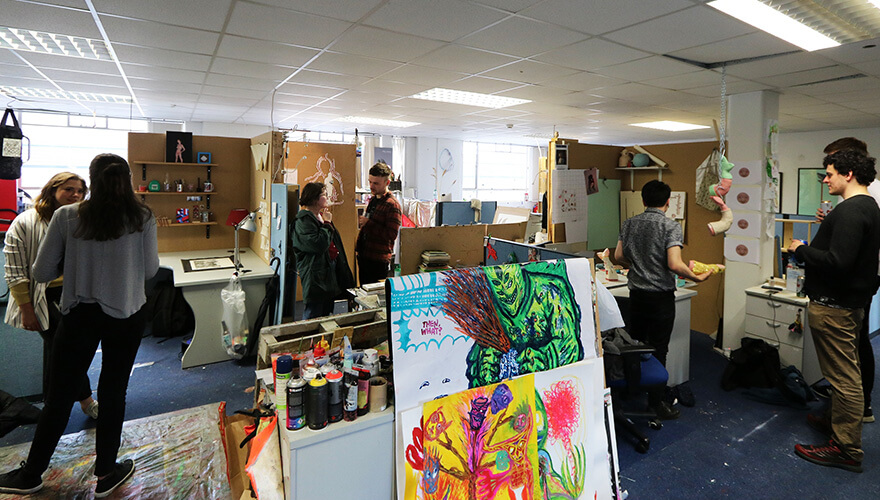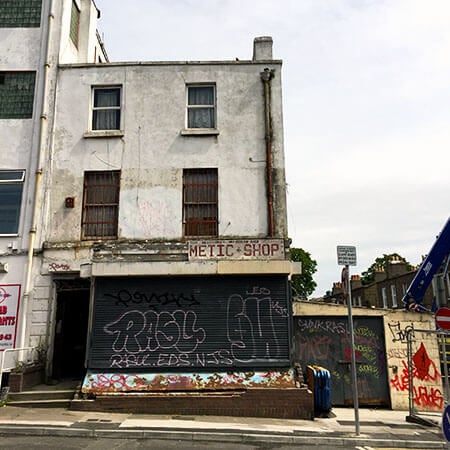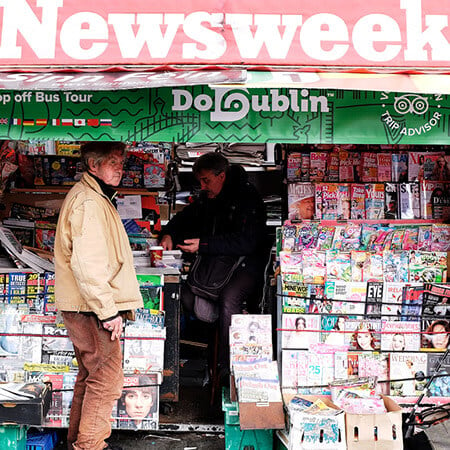One of Rathmines’ smallest buildings happens to be one of the most distinctive, for it houses a Dublin art collective, MART.
The old fire-station, with a classic engine-red door facing the main street, was built in 1847 soon after Rathmines became an independent “township”. Like the magnificent Rathmines Town Hall, the station was a symbol of township independence and civic pride. The fire crew based here played a big role battling the inferno, which blazed around Sackville Street during the 1916 Rising, winning medals in the process. Locally they fought the fire that destroyed St Mary’s Refuge of Sinners church, back in January 1920. They couldn’t save the old dome however, its dramatic, melting collapse led to the much bigger, green replacement “Russian” dome we know today.
Following Independence, the townships, like Rathmines, were killed off. The station was still used up until the 1980s but by the mid-90s it lay neglected and empty. In 2012 however the fire station got, if not exactly a reprieve, certainly a new lease of life from an unlikely source.
eye-catching building full of heritage and history
Artists Ciara Scanlan and Matthew Nevin are both visual arts practitioners and curators. They are also the co-founders and directors of MART, a non-profit artists’ collective formed in 2007. Back then as Scanlon explains they initially “set up exhibitions in empty retail units throughout Galway”. Within a few years they’d expanded to shows “in the UK, Europe and US”. MART were also on their way to turning into the largest providers of artists studios in Dublin, although low on main street visibility. The fire station would change that.

Artists Matthew Nevin and Ciara Scanlan, visual arts practitioners, curators, co-founders and directors of MART
Scanlan and Nevin approached Dublin City Council and persuaded them to let them restore the fire station as a gallery and as artists’ studios. That proposal turned out to be the easy part. The building Scanlon remembers was in a very bad way, “no windows, (no) doors, broken floors and beams. The roof had been thankfully repaired years earlier by DCC, so was structurally sound”. But, “pigeons had made themselves very much at home!” Following two years of hard manual work, the old station and the house behind finally reopened in 2014. It has been housing artists and showcasing exhibitions ever since.
MART has grown to lease 9 building in Dublin City for art studios, with other studios including spaces in Portobello, Crumlin, Kilmainham and Blackpitts. Scanlon notes, the fire station functions “as our gallery and home base”. The station gives them street front presence as well, in an eye-catching building full of heritage and history.
MART provide the Holy Grail: affordable studios, along with a community
A previous exhibition at the Fire Station ‘Freedom of Movement’; which finished in September 2017, was an intriguing look at a collection of films by Berlin-based artists Nina Fischer & Maroan el Sani. The Core Project, at the Rua Red Gallery in Tallaght, is a show by MART’s co-director Matthew Nevin. Started back in 2010, the artist sought to make a connection with one resident from every sovereign state in the world. He asked them to record a spontaneous, videoed response to the question: “What is going to happen Next?” The respondents had to open their envelope in front of the camera, and so had no time to prepare their answers. Where exactly they opened it; how they reacted when they read the question, and what they then chose to share, was all entirely up to them.
Nevin has received around 144 video responses to date. This diverse treasure trove of audio-visual information is worth a visit. The project in its entirety will have two strands: video installation at Rua Red Gallery; and a feature-length movie called What Is Going To Happen Next?.

The scene inside MART’s artist studios
Returning to MART, it’s clear they deserve huge credit for re-purposing the fire station. It’s a bonus their tenancy not only maintains a beautiful old building, but keeps it open to the public too. From the artists’ point of view, MART provide the Holy Grail: affordable studios, along with a community and even a de facto support network, for people who often face what is after all a difficult, occasionally very isolating profession. Clearly MART enhances the cultural vibrancy of Rathmines. Arguably it even “internationalises” the area, as overseas artists exhibiting in MART venues make a pit stop among a network of creativity stretching from Norway to Greece to North America, Latvia and France.
However the old fire station’s long term future remains uncertain. As Scanlon says they would dearly like to get a permanent home, “move away from leases” admitting that that “could take a few more years”. She quotes the model of WASP studios in Scotland, well supported by government there. By contrast, Scanlon says the future of MART at the fire station “is not secure at all. They hope to have their tenure renewed, “but there’s no guarantee. We would love to negotiate a long term lease” and be valued “as an important provider of an art centre in the area”.
The building missed receiving protected status in 2015 due to a Council clerical error and there are conflicting opinions on how to proceed. Some wish to resolve the error and provide protected status whilst others point to the need for future development on lands behind the fire station (part of the Draft Local Action Plan).
In any case, all this is a chapter of Rathmines history yet to be written. For now enjoy the fire station, its events and exhibitions. It’s a cultural asset to the area, and a testament to the determination and conviction of the artists who made it.
MART is based at 190A Rathmines Road Lower, Dublin 6. Opening hours Tues-Sat: 1-6pm


